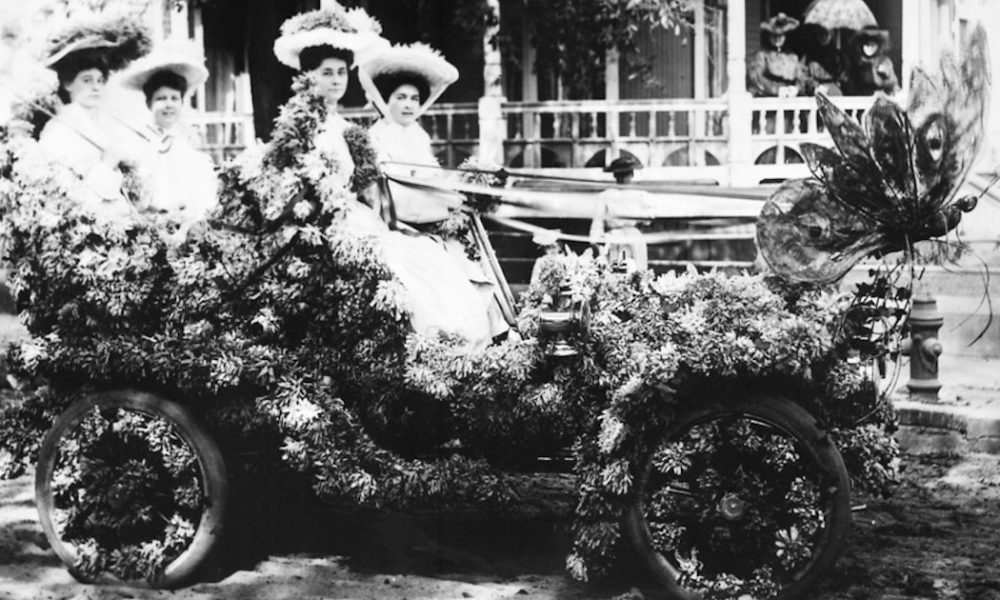 Mobile Mardi Gras, circa 1905. Photo provided/Bettmann Archive
Mobile Mardi Gras, circa 1905. Photo provided/Bettmann Archive
A family medical event ripped me from my Oregon home and landed me in the pine woods that I grew up in. While I help my family care for Dad, my finger is temporarily off the pulse of Cottage Grove.
One of my jobs here is to scan the local Tallahassee Democrat and read out any story that may interest Dad and help keep his mind occupied. I came across a story that featured local businesses creating New Orleans-style food and drink in celebration of Mardi Gras.
Lenten season will have encircled you as you read these words; maybe you still have your repentance ash mark on your forehead as you traverse the 40-day preparation to Easter. This begins on Ash Wednesday and proceeds through to Maundy Thursday. Lenten practice can vary, but many believers in addition to doing penance, giving of alms, mortifying of the flesh, and the denial of the ego, give up some cherished luxuries in what is known as a Lenten sacrifice.
This may involve not eating meat, chocolate or strong drink. It is to remind one of the sacrifices experienced by Jesus as he spent 40 days fasting in the wilderness in preparation for his ministry.
Along with this period of self-deprivation, pre-Lenten festivals evolved world-wide. Known generally as ”Carnival,” in Rio de Janeiro, Trinidad, and Venice, ”Fastnacht” in German, and ”Shrove Tuesday” in tamer parts of the globe, the idea is to get your last licks of excess in before the somber time begins. Mardi Gras, the French version, means ”Fat Tuesday,” and implies that you should gulp down the richness of life while you can.
When you hear Mardi Gras, many naturally think of New Orleans. While I never made it there for Mardi Gras, I was a regular at the New Orleans Jazz and Heritage Festival. How to see everyone you wanted to? I waded through the throngs to get from Fats Domino, over to see Dr. John, then back for the Radiators or the Neville Brothers. One year, I passed on Stevie Ray Vaughan to catch someone else and was shocked when I heard he died in a helicopter crash that summer. Choices, choices, oh for a crystal ball!
Regardless of the fame of the New Orleans version, it is not the oldest Mardi Gras celebration in America. That honor goes to Birmingham, Ala. All through the Mississippi River valley – anywhere the French explorers set up forts or trading posts or French colonies were established – the seeds of Mardi Gras were planted and often still flower.
The first recorded celebration was on March 3, 1699 on the banks of the Mississippi – about 60 miles downstream from New Orleans. The Le Moyne brothers, on a mission for Louis XIV, had landed there the day before and celebrated the first Mardi Gras.
In 1702, one of the brothers, Jean-Baptiste le Moyne, founded Mobile, Ala., as the then-capital of French Louisiana. The very next year, 1703, marked the first organized Mardi Gras celebration there.
Mardi Gras traditions, like the lavish masked balls, mystic societies (Krewe), and ”throws” (beads and treats thrown to spectators) originated in Mobile. One truly unique throw that is a ”Mobile only” is the moonpie, a chocolate-covered cracker filled with marshmallow filling.
The over three centuries of Mobile Mardi Gras, tradition had to sit out the Civil War when the oldest of the mystic societies, Boeuf Gras, dissolved in 1861.
In 1868, a native Moblian Joe Cain single-handedly revived the tradition by dressing up as an imaginary Choctaw Indian chief, ”Slacabamorinico,” and parading through the streets. He was joined by a group of confederate veterans on a decorated coal wagon who blew horns and beat on drums as they thumbed their noses at the occupying Union Army.
One of the most bizarre of Mardi Gras traditions has been happening now for over 30 years in Berkeley, Calif. A diehard New Orleans infected impresario by the name of Reverend Jim, brought the Church of the Great Green Frog to the college town. He soon converted enough followers to the art of Mardi Gras to have annual parades complete with lavish hand-drawn floats, themes, costumes, King Cake parties, and of course it wouldn’t be Berkeley without some politics thrown in. While the good reverend moved on after a quarter of a century of festivities, Berkeley Mardi Gras is alive and well and the Great Green Frog goes out before this ragtag group. This year’s theme is ”The End of the World Ain’t Religion, It’s Science!”
If you are observing Lent, more power to you! If you are sleeping off a Mardi Gras hangover, I wish you the best. And from the Krewe down in Bezerkely, ”Hoppaluya!
You can reach Dana at [email protected].








